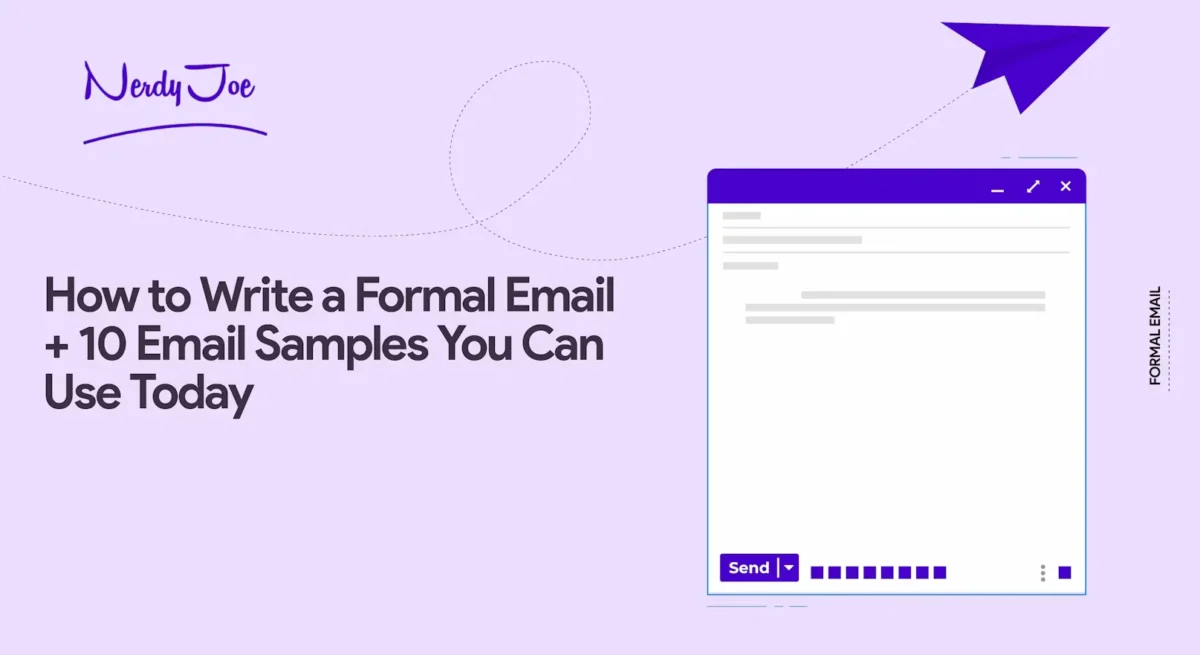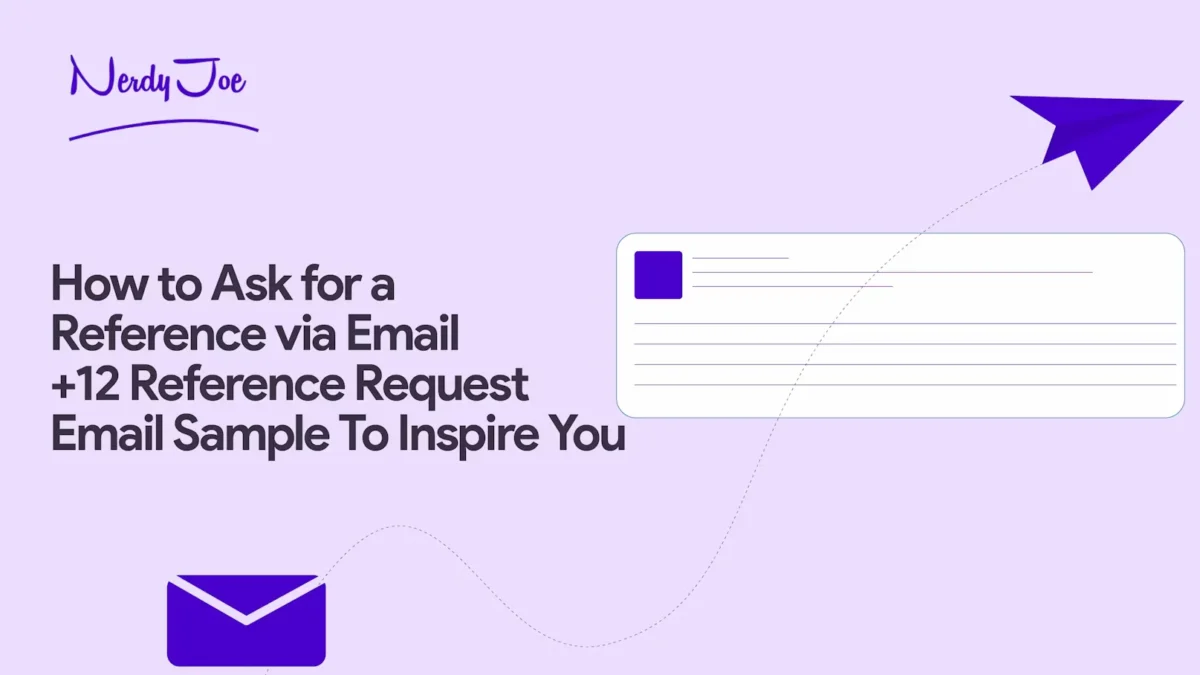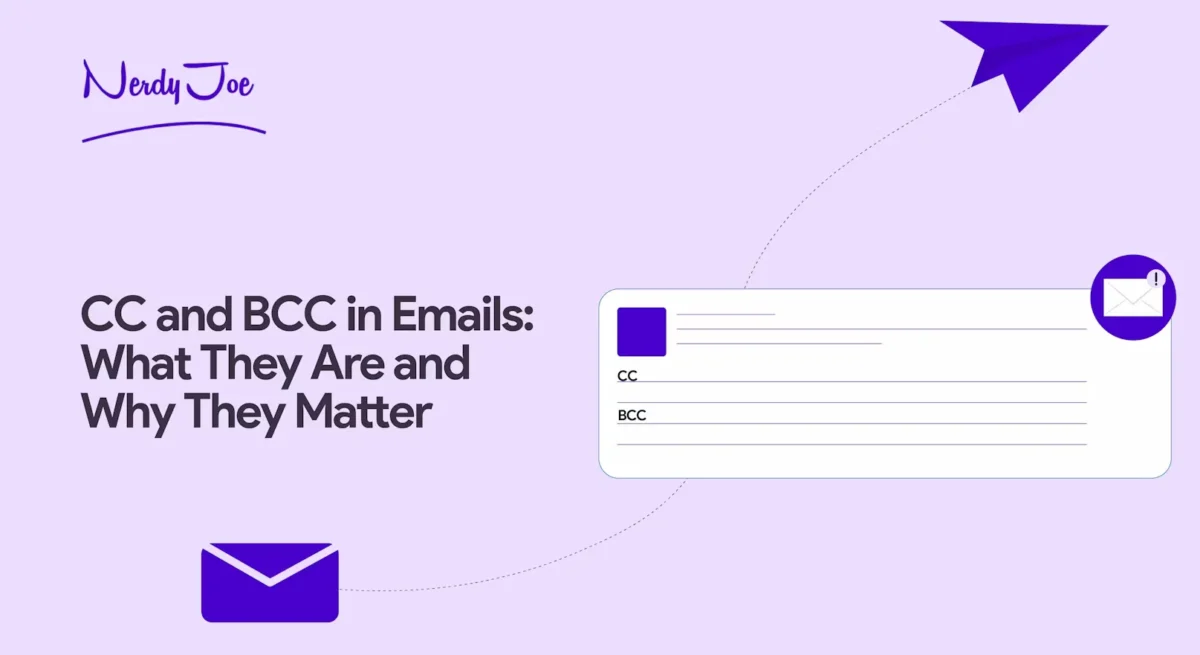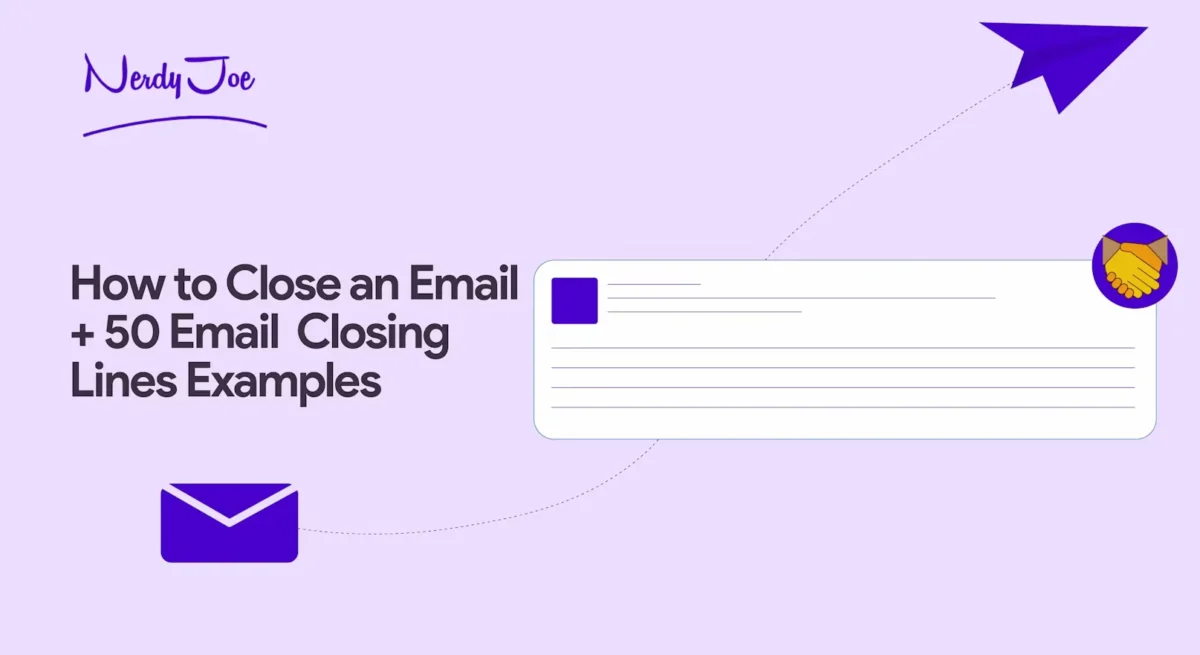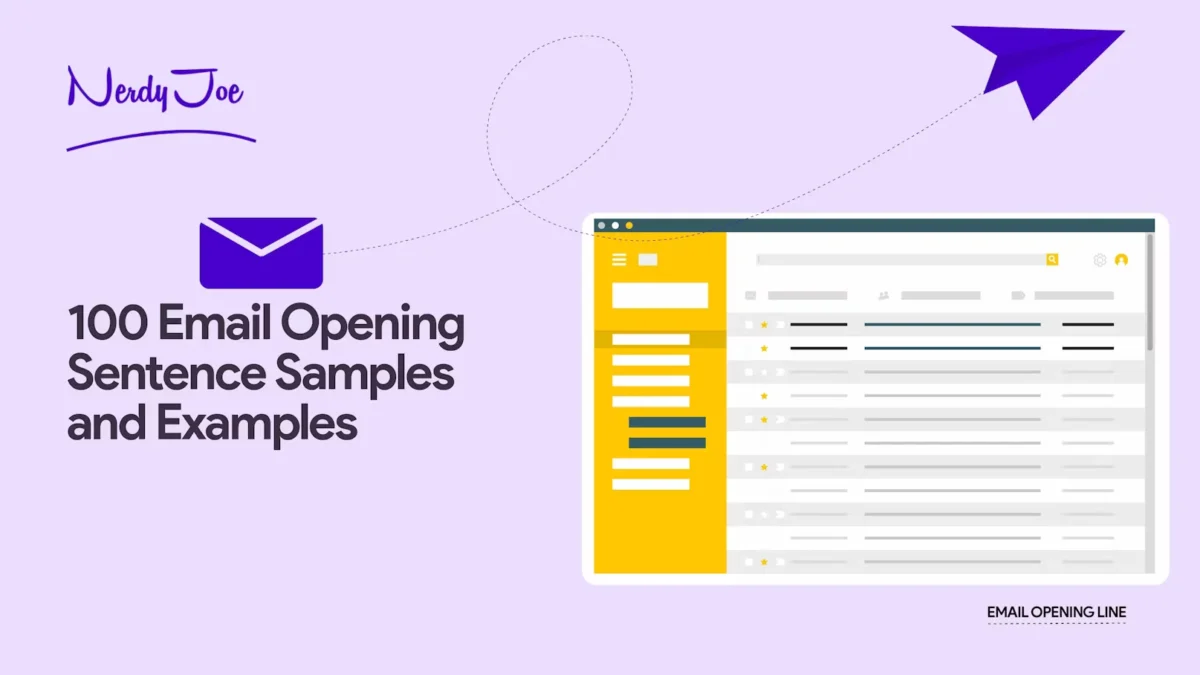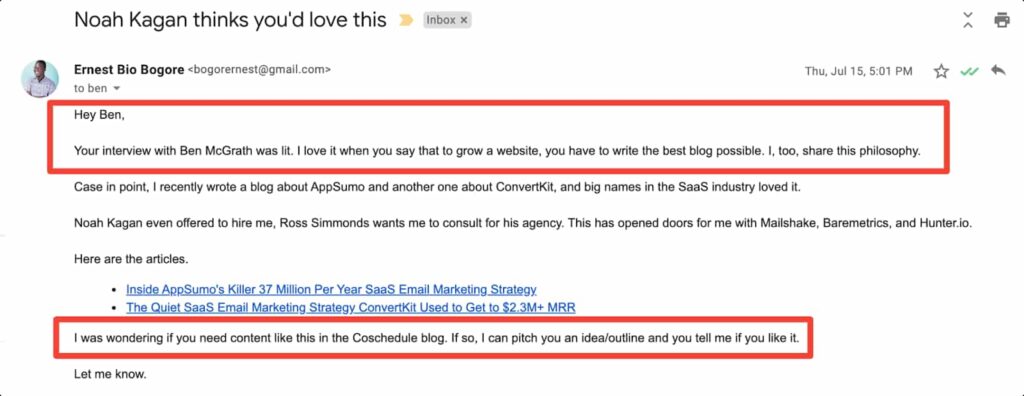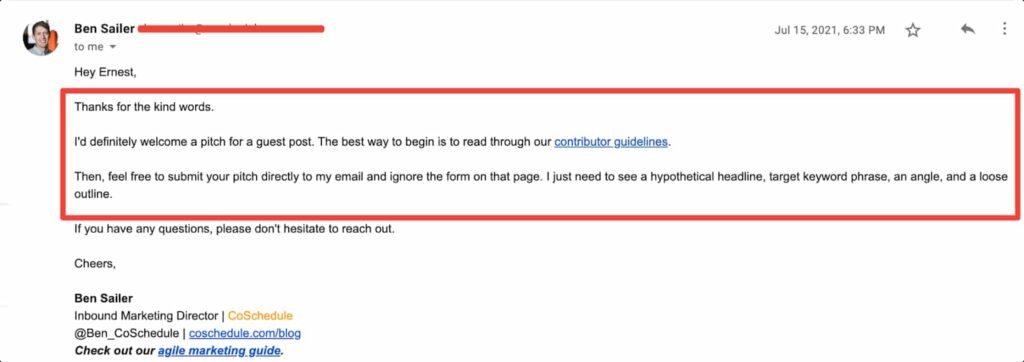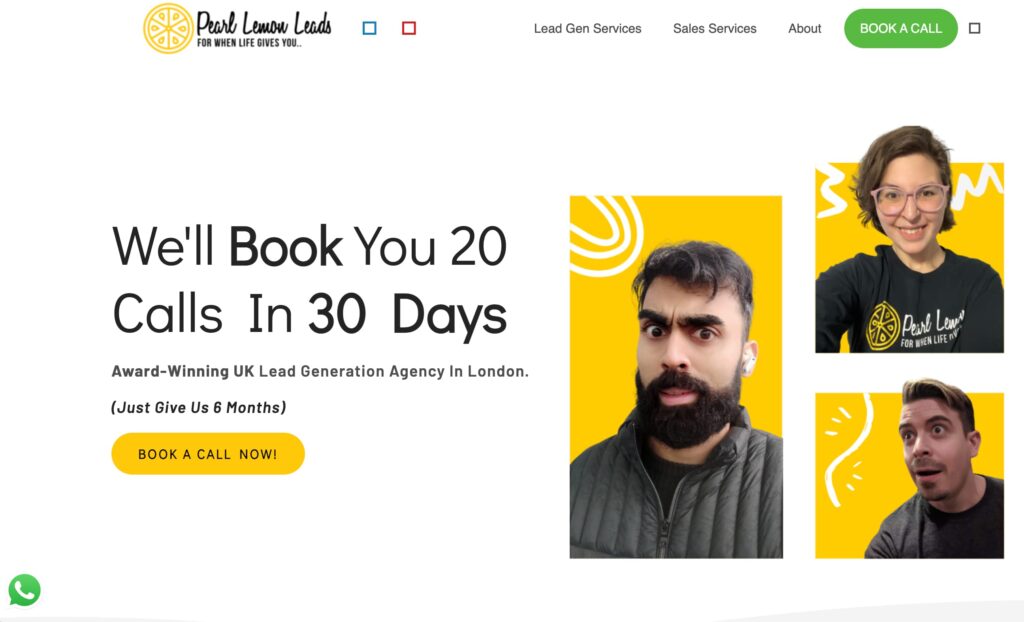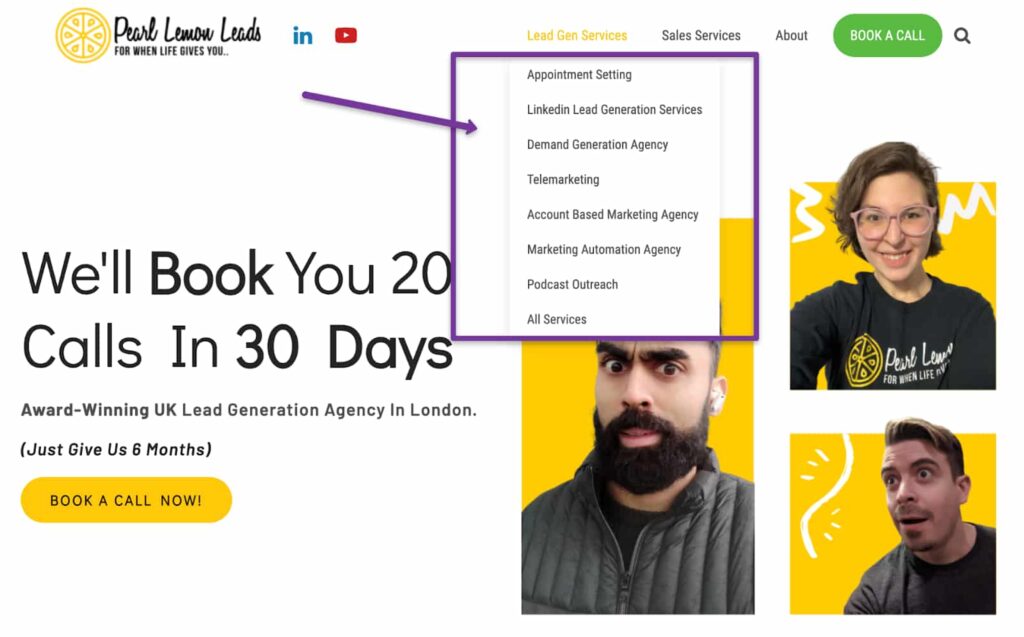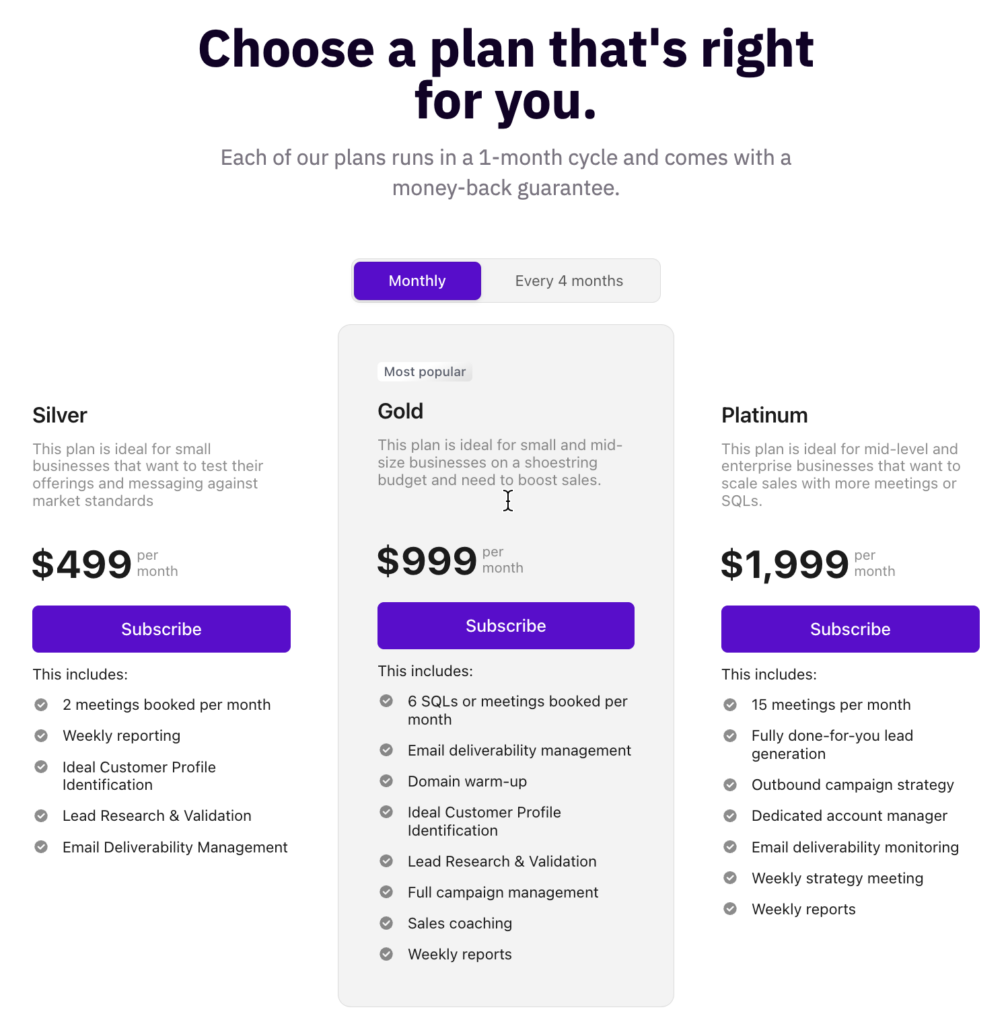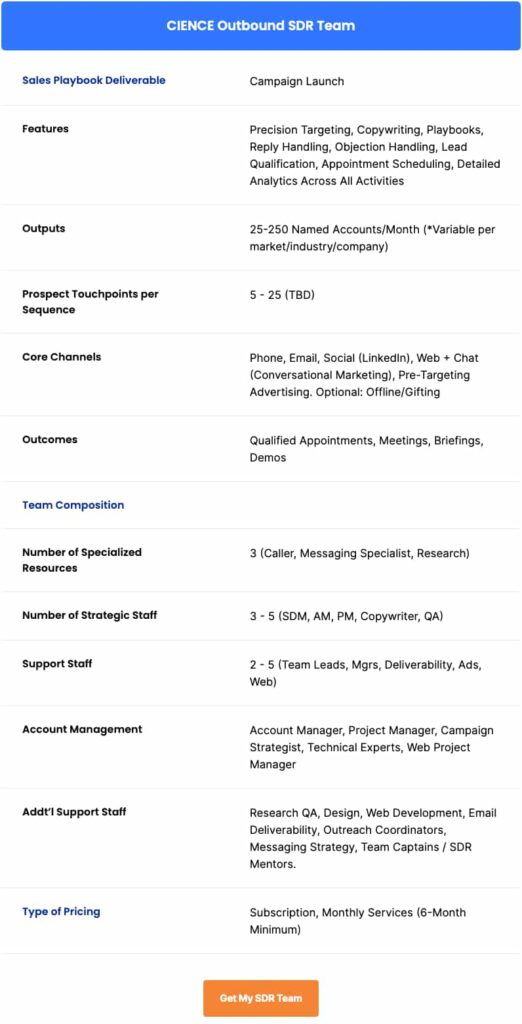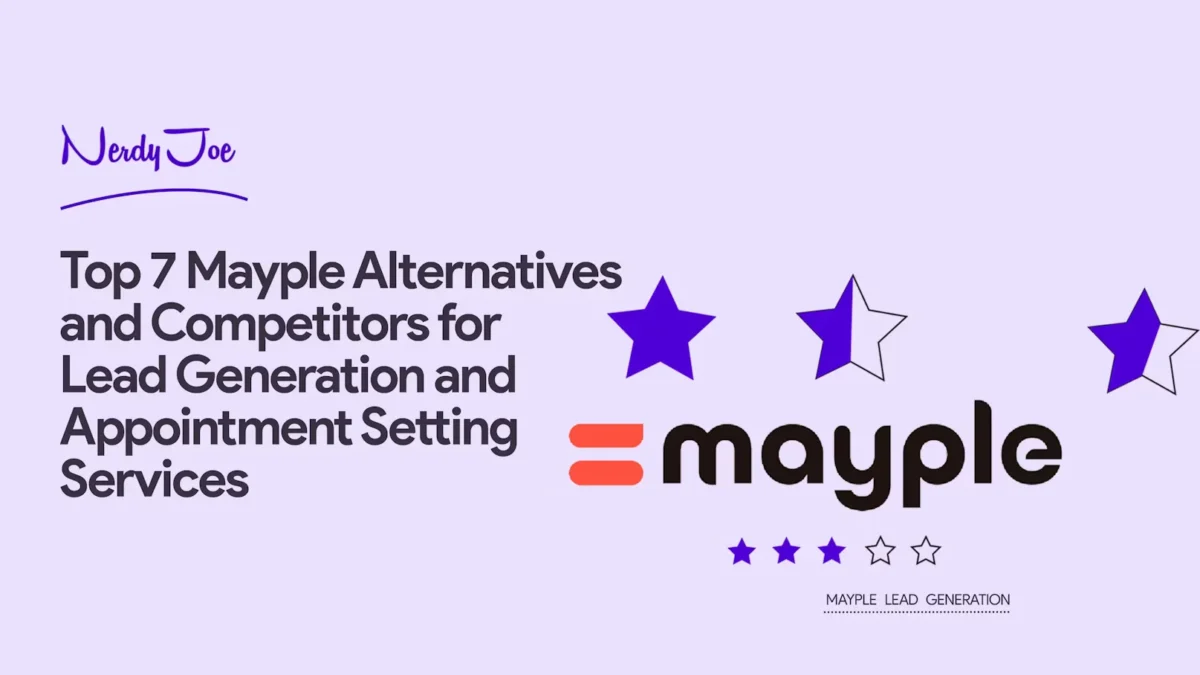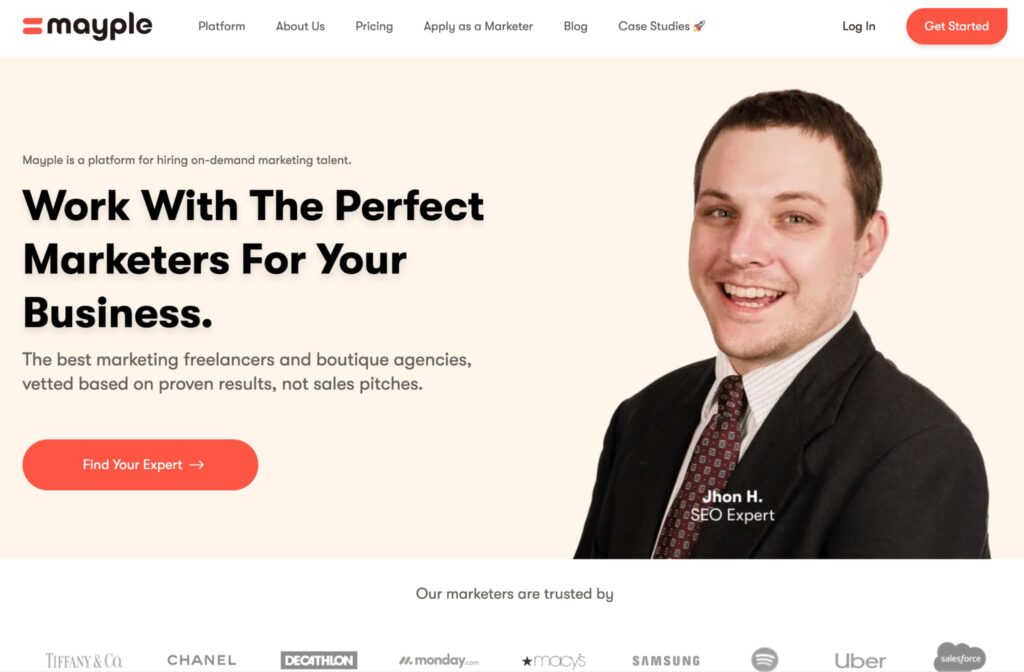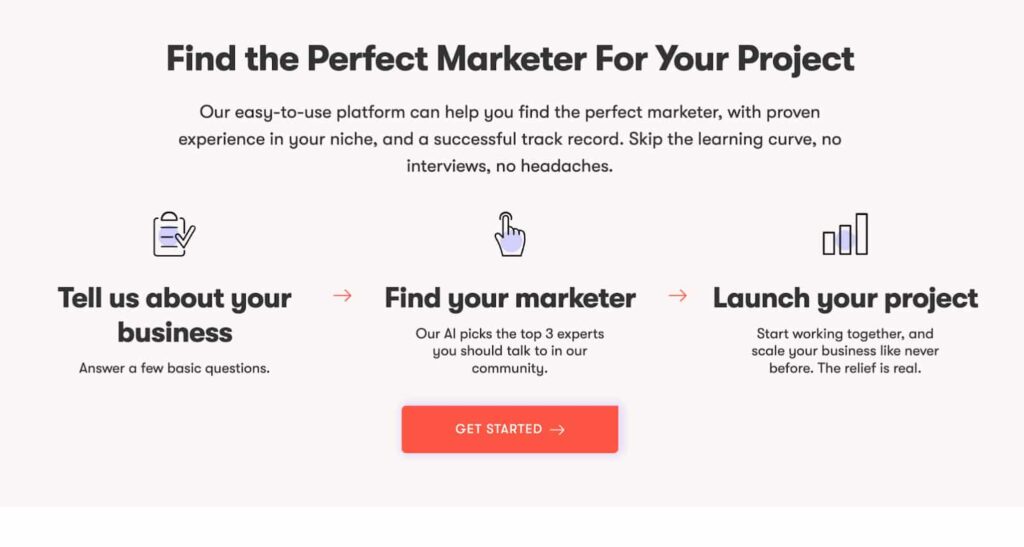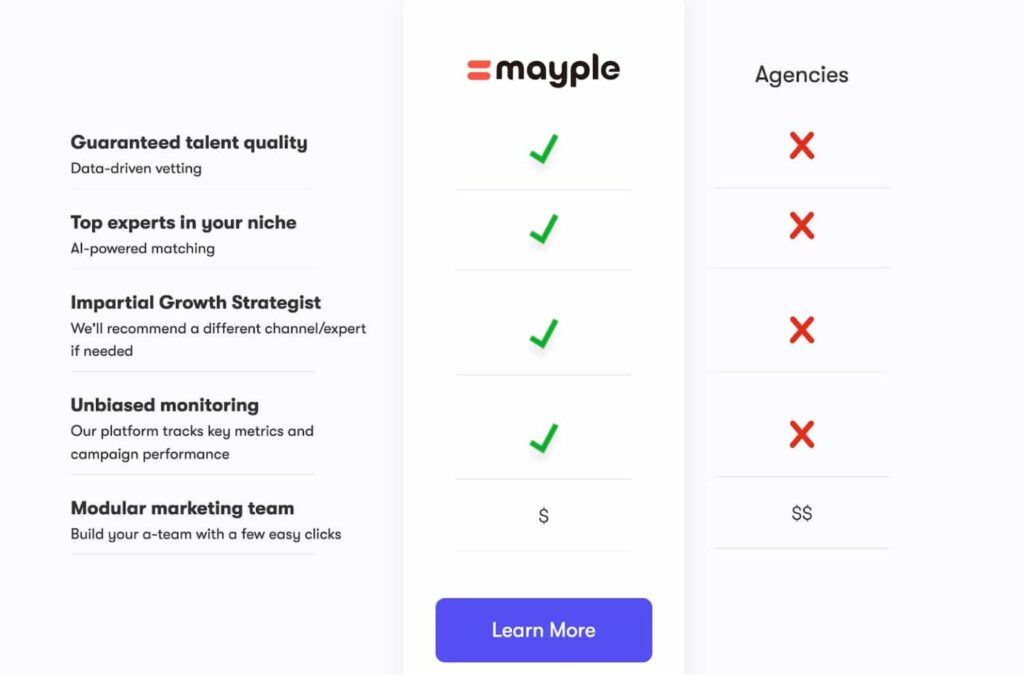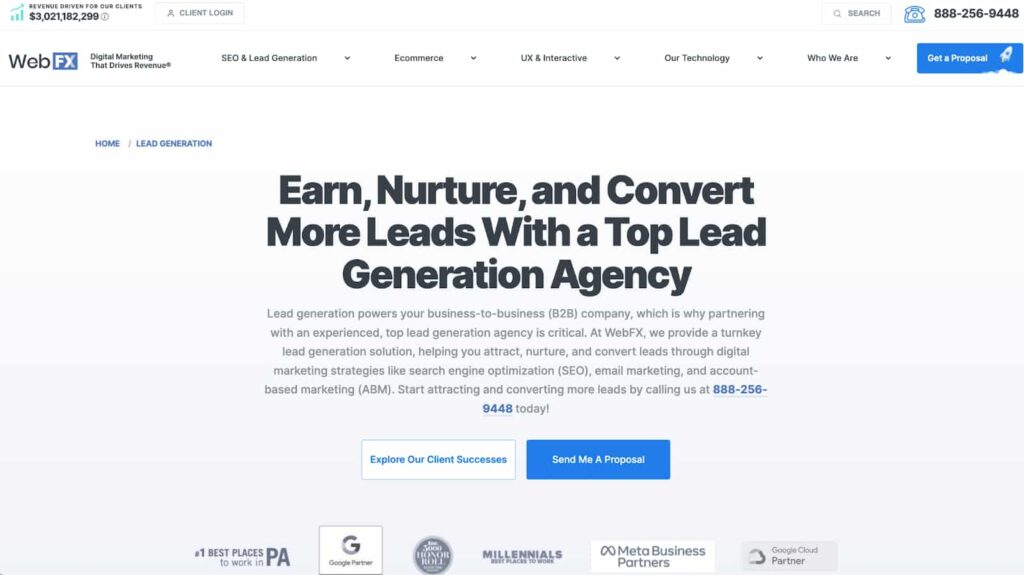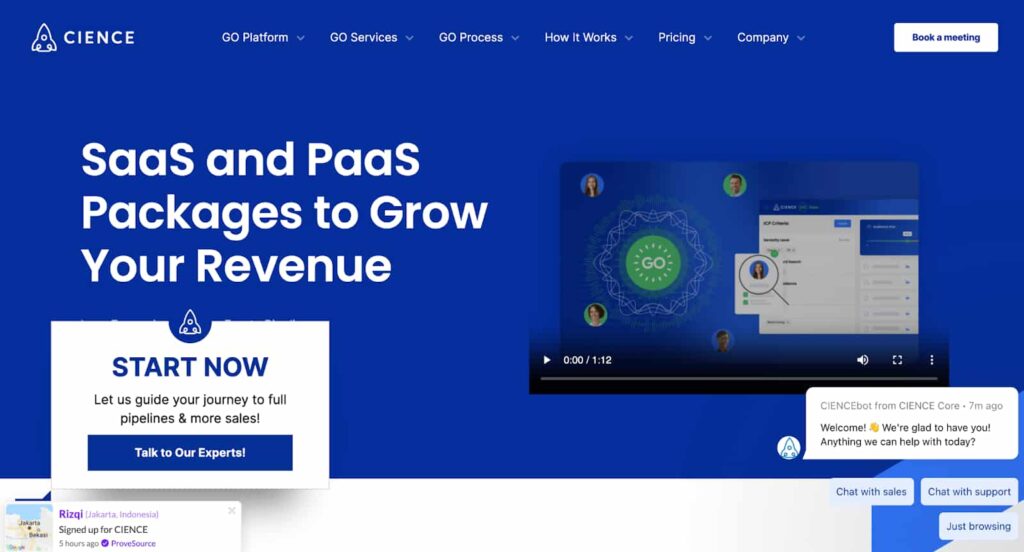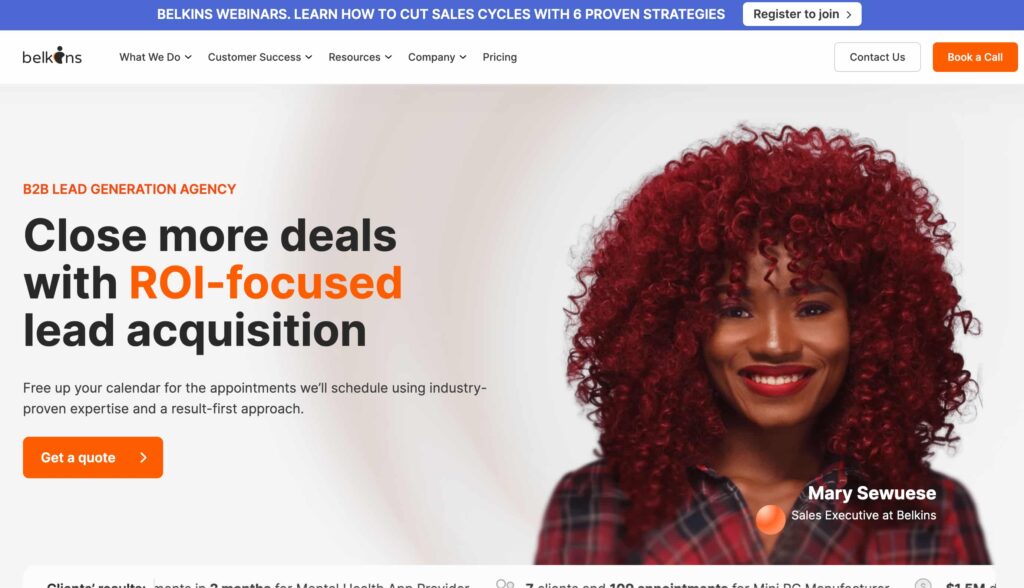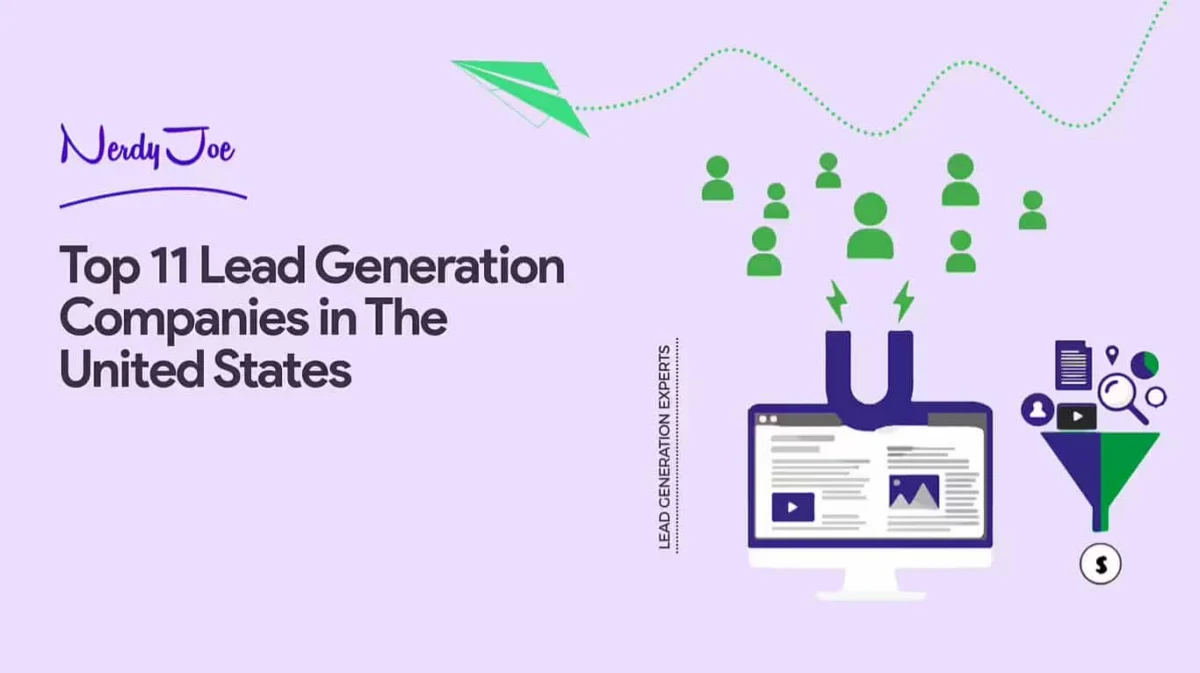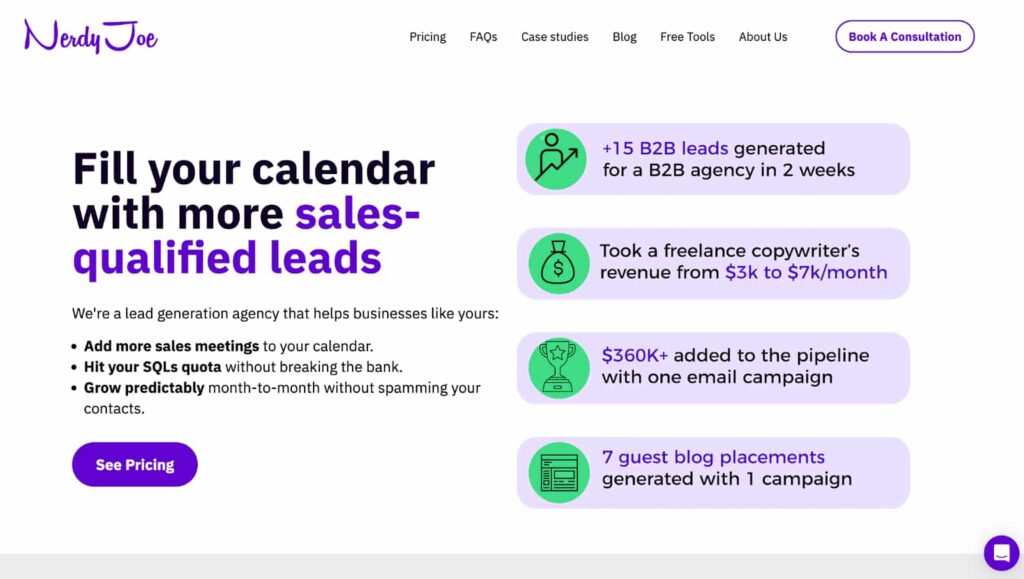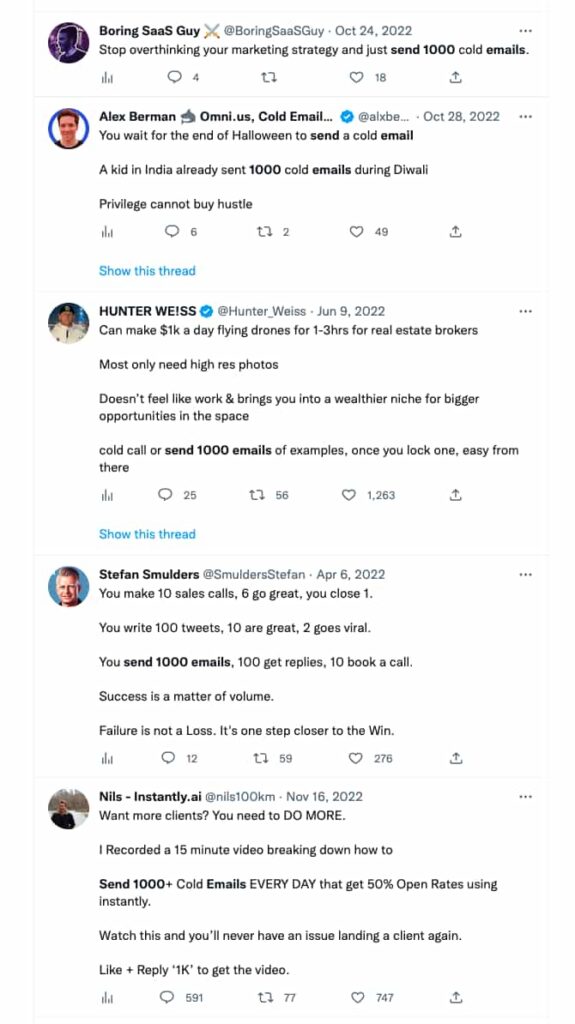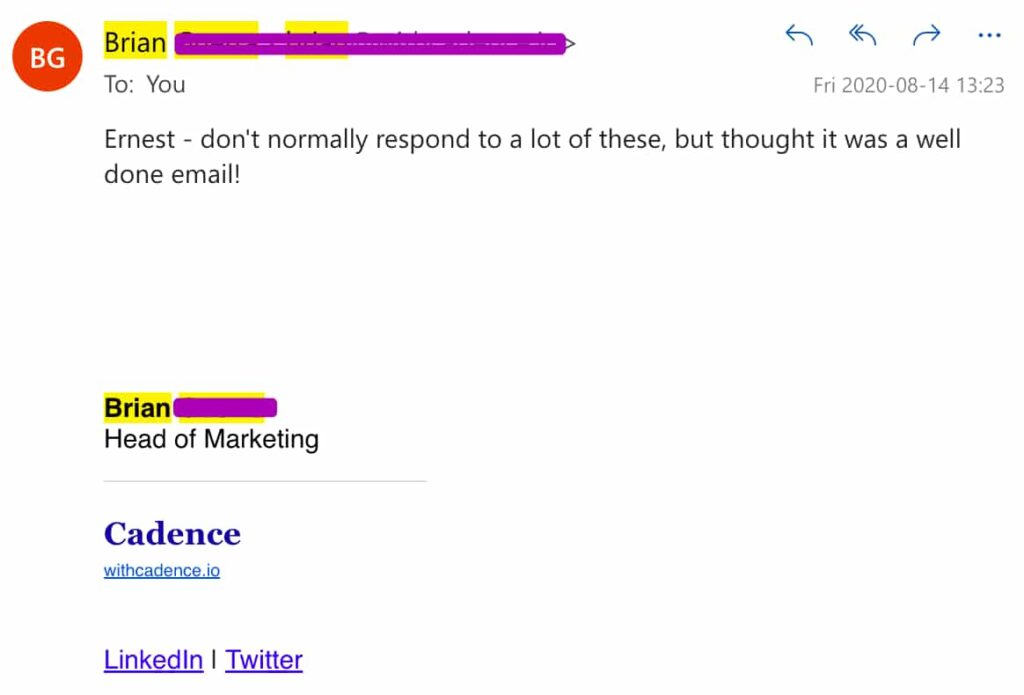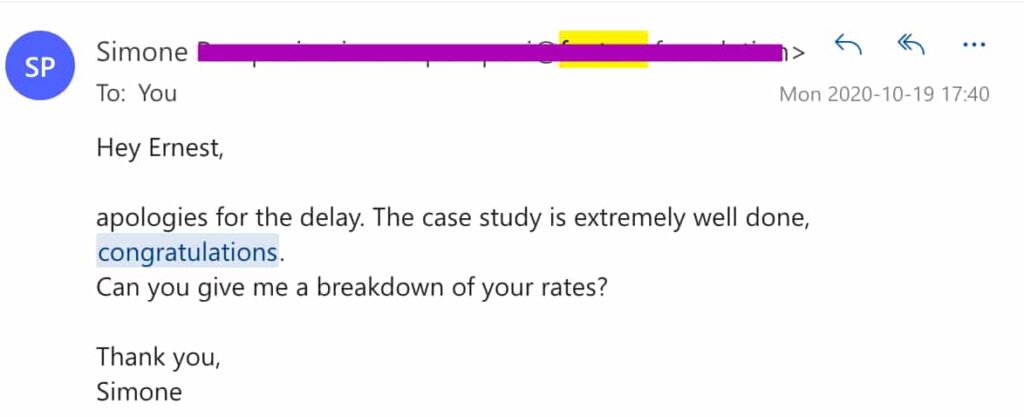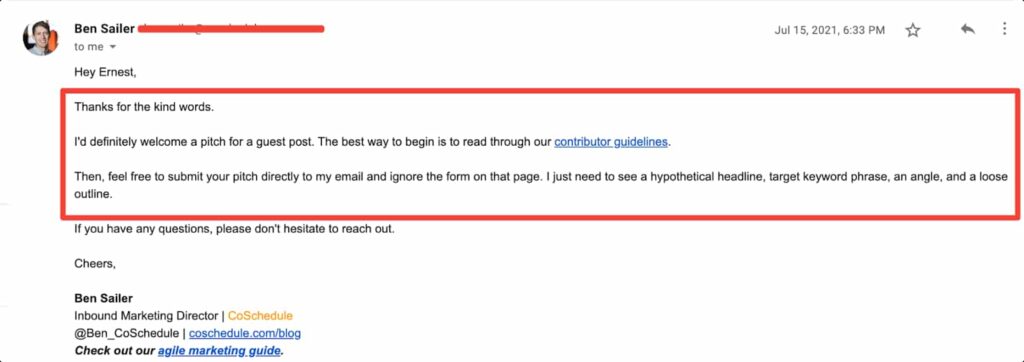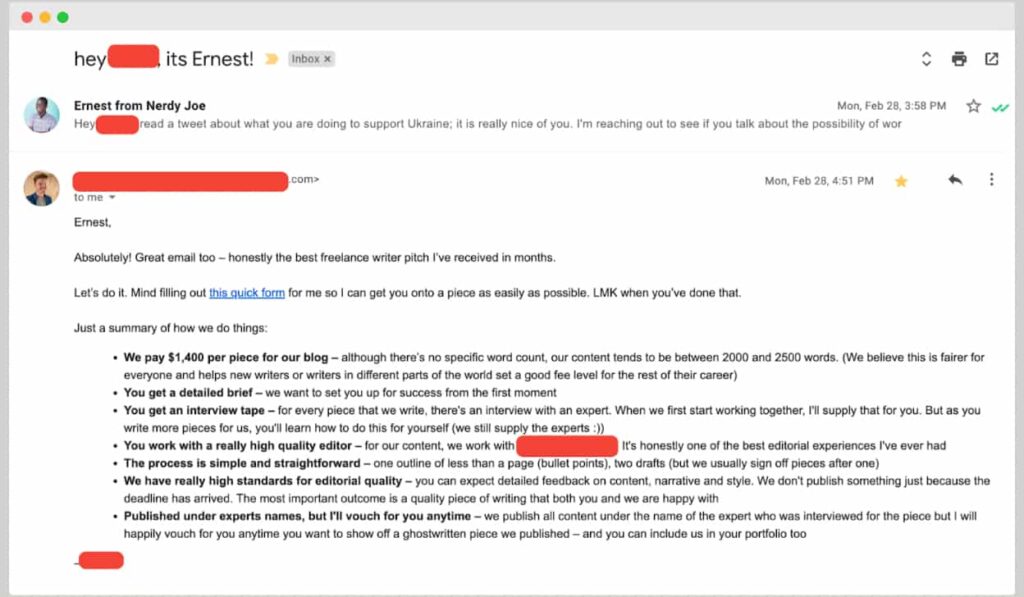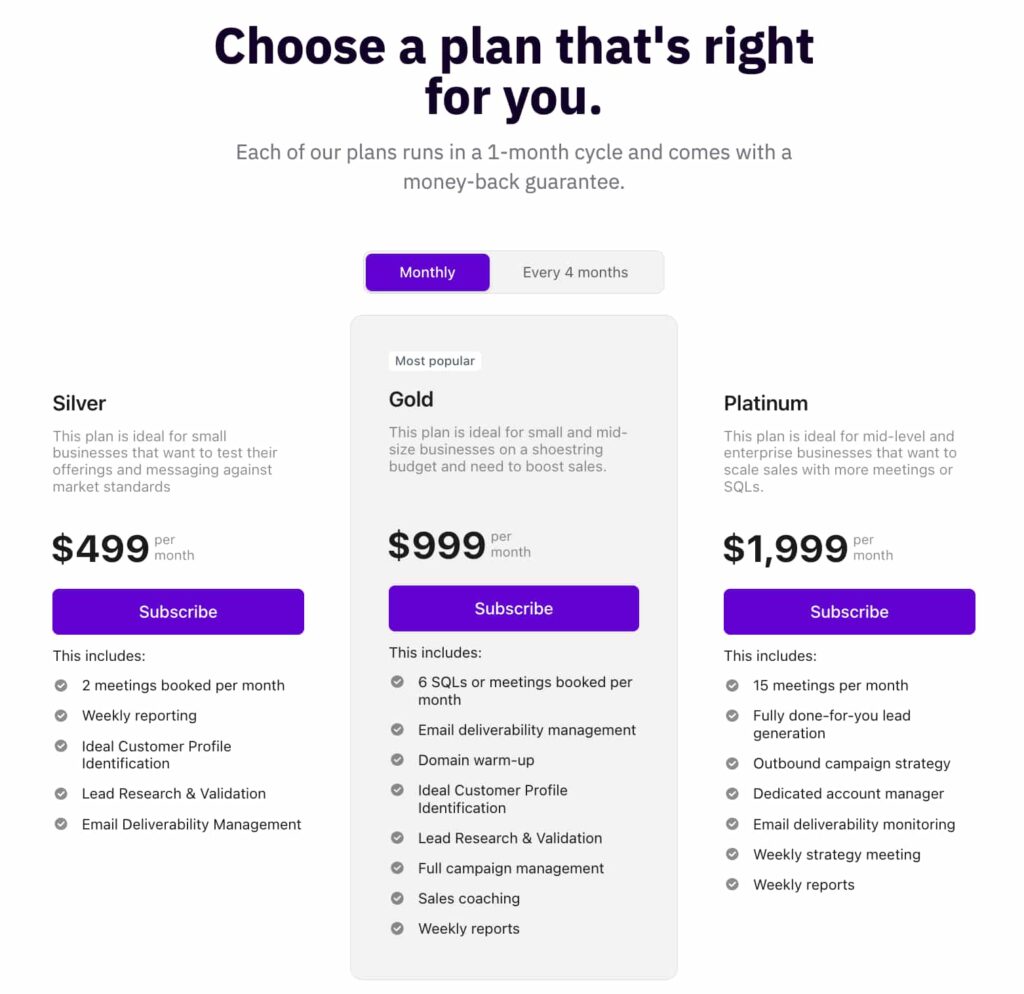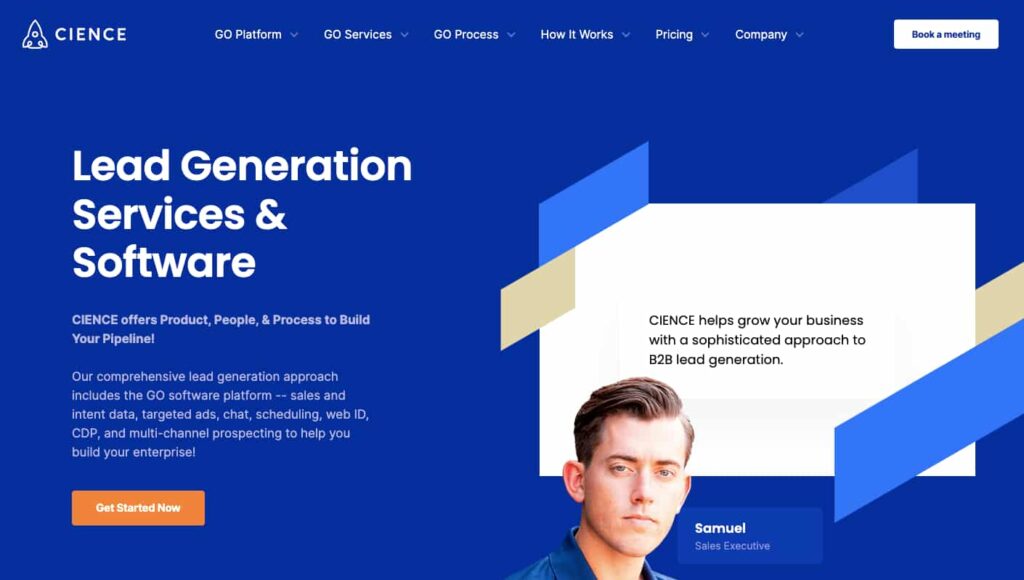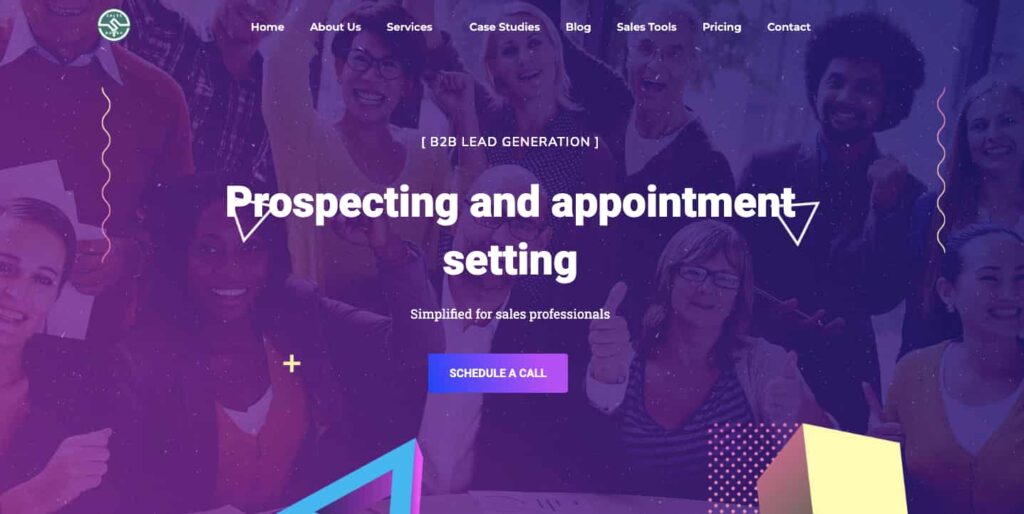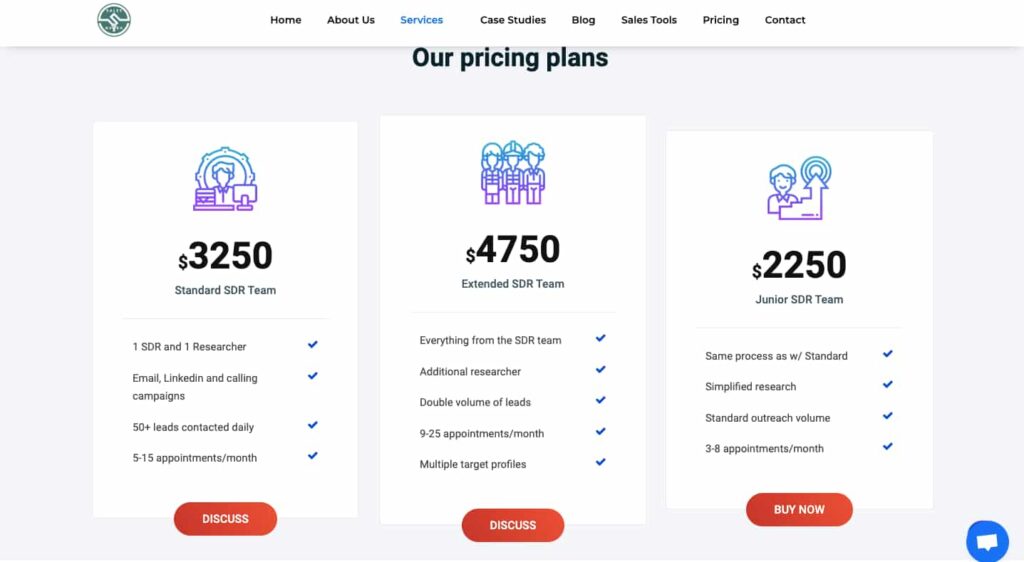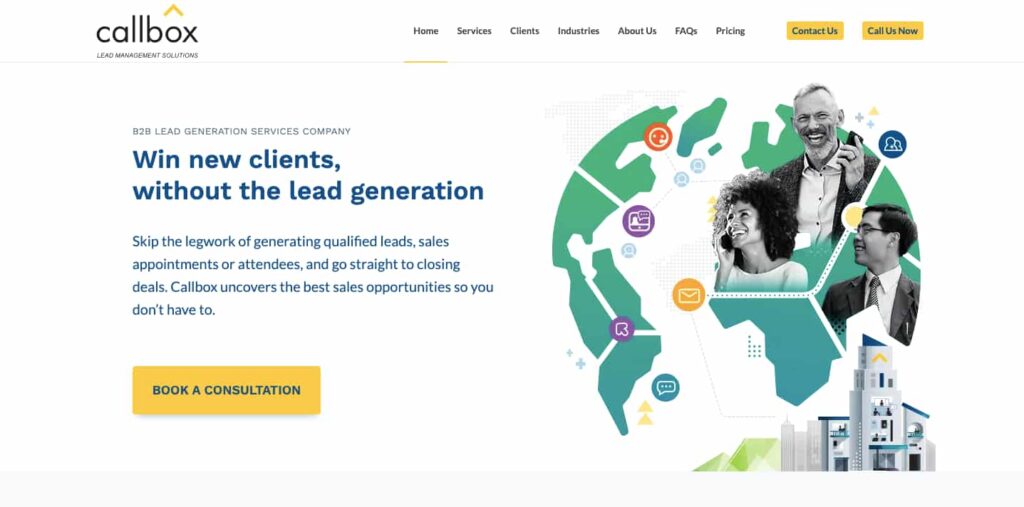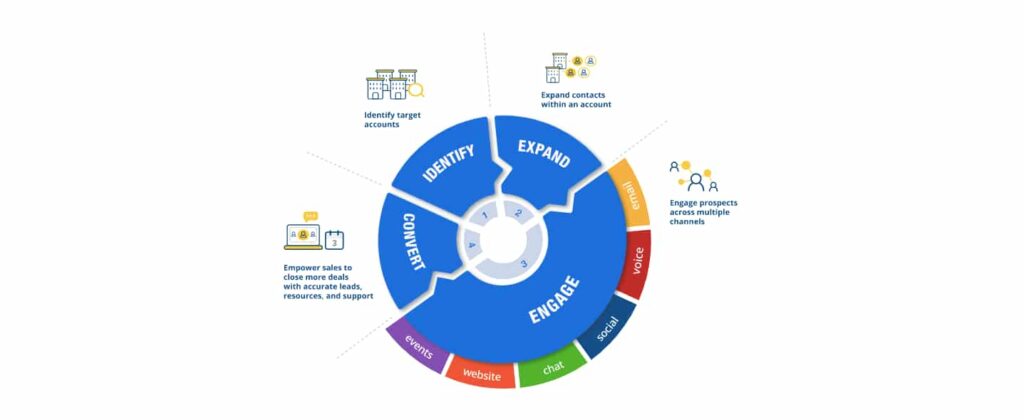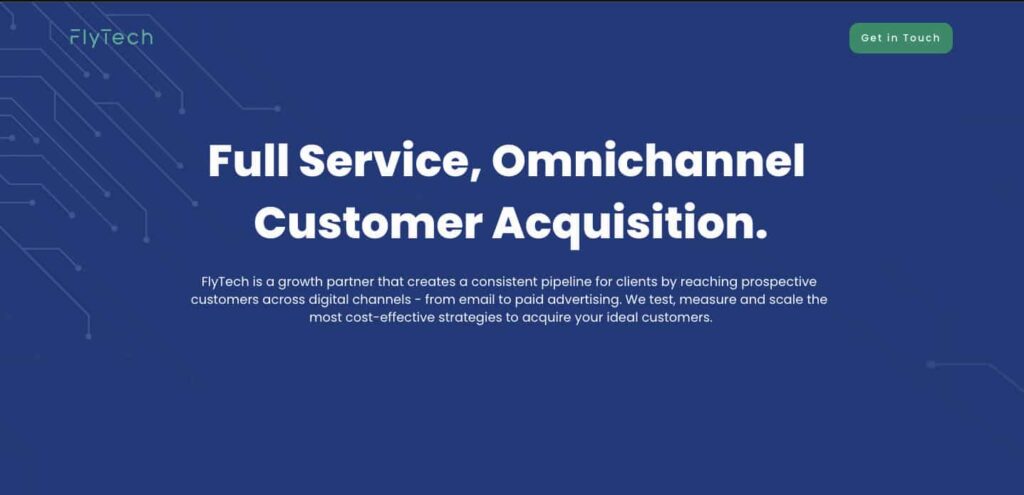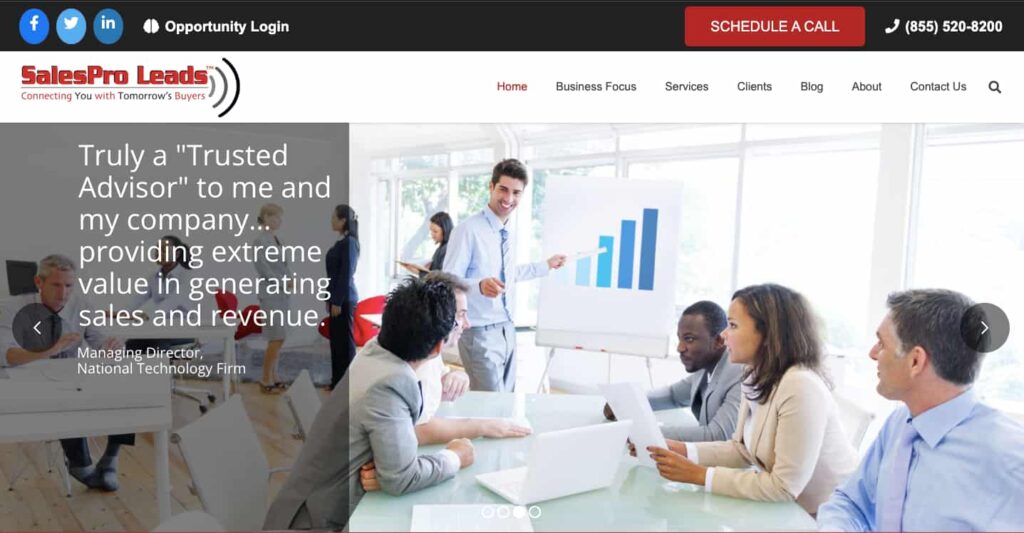How to Write a Formal Email With 10 Samples
Formal emails convey professionalism and respect between two business entities or individuals. A well-structured formal email reflects positively on the sender and their organization, making them an essential tool in any professional environment.
In this article, we explore the concept of formal emails, shedding light on what they are, their integral components, when and where they should be used, and how to effectively write formal emails.
Without any more ado, let’s get started.
What is a formal email?
A formal email is a type of email communication that adheres to professional standards and conventions in its structure, content, language, and tone.
Formal emails are used predominantly in the professional world and in official contexts. They serve as a key medium of interaction in business, education, institutions between officials and various professionals.
The main difference between formal and informal emails is that formal emails are written in professional and polite language. They are typically clear, concise and follow a certain structure and style. On the other hand, informal emails are more relaxed and conversational.
Where and when to use formal emails
Formal emails are commonly used in a variety of professional and academic contexts, such as when you are emailing a CEO or your professor. Knowing when and where to use them appropriately can greatly enhance your communication effectiveness and professional image.
Here are some common instances where writing formal emails is necessary:
Job applications and follow-ups
Typically when applying for a job, you want to come across as a serious, professional applicant. Also, you want to create a good first impression and get them to remember you. So, it only makes sense that you use formal email language in your application, cover letter, or resume.
The same applies to follow-up emails after interviews. This shows your professionalism and respect for the position and the company.
Communication with superiors and colleagues
In a professional setting, it’s essential to maintain a certain level of formality when communicating with your superiors or colleagues, especially when discussing official matters, presenting ideas, or reporting on tasks.
Keep in mind that this might not be applicable to all businesses as the way people typically communicate, and the language they use in their business communications depend largely on the company’s values and culture.
Client communications
Whether you are introducing your services, providing updates, answering inquiries, or dealing with complaints, you also want to maintain a strong level of formality when discussing with your customers.
As a business, maintaining a formal tone in communicating with clients fosters a sense of professionalism and credibility. In other words, it encourages them to see you as a serious, official entity that they can trust and recommend easily.
Business to Business (B2B) communications
When you are communicating with another business, whether it’s for partnerships, collaborations, or negotiations, it’s imperative to use a formal email and sound as professional as you can.
The first reason is that you need to address the other business as a serious corporation and show respect. But the main reason for this is that in the B2B realm, interactions involve high stakes, professionalism, and a significant amount of trust. Thus, the tone, structure, and content of the communications must reflect these factors.
Academic correspondence
Academic correspondence requires formality and respect. That’s just how it needs to be. So, when corresponding with professors, administrators, or other staff in an academic setting, you should use formal language.
Doing so reflects your professionalism, respect for the recipient’s position, and commitment to your academic endeavors.
Government or legal communication
This goes without saying, as officials are known to be the champions of formality and respect. So, any correspondence with government officials, legal entities, or similar institutions should be formal. This can range from applying for permits to requesting information or submitting reports.
Formal invitations or announcements
If you’re sending out invitations for a formal event, such as a conference, or making a professional announcement, like a change in company policy or structure, then a formal email would be appropriate.
Formal email format: Key elements and structure of a formal email
A formal email is similar to a formal letter, having the same key elements. Here, we will examine each key element you need to consider when writing a formal email.
Formal email subject line
See the formal email subject line as the introduction that identifies the intent of the email. It appears in bold in the inbox of your recipient, and it’s the first thing they see. So, you want it to be clear, concise, and relevant to the content of the email.
Here are some tips on how to write effective formal email subject lines:
- Be specific and concise: Always state the purpose of your email in a succinct way to keep a clear subject line. Recipients should have a good idea of what the email is about before they open it.
- Avoid spam-like language: All caps, too many exclamation marks, or words such as “free”, “buy now”, and “urgent” can trigger spam filters and also seem unprofessional.
- Indicate if action is required: If you need the recipient to do something, it’s a good idea to include this in the subject line. Phrases like “Please review” or “Feedback required” can be effective.
- Personalize when appropriate: Personalizing the subject line can make it stand out. A personalized subject line increases the open rate by 41%. If it’s a job application, you could include your name in the subject line.
Formal email salutation
Also known as a formal greeting, the salutation is the first line of the email. It’s where you start addressing the recipient, and it sets the tone for the rest of the email. As a rule of thumb, just shoot for showing respect towards the recipient.
The most common salutations for formal emails are “Dear,” followed by the recipient’s title and surname. If you know the person you are writing to well, or they are in a less formal position, you may use their first name.
Here are a few examples of formal email salutations:
- When you know the recipient’s name:
- Dear Mr. Smith (for a man)
- Dear Ms. Johnson (for a woman, regardless of marital status)
- When the recipient’s gender is unknown, or the name is gender-neutral:
- Dear Alex Jordan
- Dear J. Smith
- When the recipient’s name is unknown:
- Dear Sir/Madam
- Dear Hiring Manager (in case of job applications)
- When writing to a group:
- Dear team
- Dear Members of the Committee
Keep in mind that email salutations like “Hi”, “Hello”, and “Hey”, are primarily known to be used when writing an informal email and should be avoided in professional communication.
Formal email opening line
People often confuse email salutations with email opening lines. Well, they are not the same. The salutation or greeting is typically a salutary phrase, typically in the range of “Hello, Hi, Dear, Hey, ect” among which you choose according to the context of the email and the recipients.
The opening line, au contraire, are complete sentences, typically the first sentence of the email body. Depending on the context of the email and its purpose, you can either introduce yourself, make it an icebreaker, or simply add courteous formal email opening lines like “I hope this email finds you well”, which we advise against.
A polite self-introduction or an icebreaker is recommended if you are emailing someone unfamiliar to you or your organization. On the other hand, if your correspondent is known to you, you should omit this part and proceed directly to the main content of your message.
Formal email body
This should be all about the purpose of the email. The email body is where you communicate your main message. It should be well-structured, clear, and concise while maintaining a professional tone. A short and concise email has a higher response rate than a longer one.
Simply detail what you have to say and be as direct as possible. Avoid fluff or any other information that isn’t relevant to your recipient. Edit the message, add bullets where necessary, and use short paragraphs to make it scannable.
Formal email closing
Often referred to as the email sign-off, it is the last part of the email where you express your closing sentiments before ending with your name, and you want to leave a lasting impression. The email closing line often includes a polite or positive sentiment.
Keep in mind that the choice of your closing line should reflect the tone of your email, remain professional, and match your relationship with the recipient. Here are some common formal email closing lines:
- “Sincerely” or “Yours sincerely”: These are very common and professional email sign-offs and can be used in a variety of formal contexts.
- “Best regards” or “Kind regards”: These are also professional and can be used when the tone of the email is more friendly while still maintaining professionalism.
- “Respectfully” or “Yours faithfully”: These are very formal and can be used in extremely formal contexts or when writing to higher-ranking individuals or officials.
- “Thank you”: This can be used when you are expressing gratitude in your email, but it’s often followed by another sign-off, like “Thank you, Best regards, [your name]”.
Here is how you can write the closing line:
- Choose the appropriate sign-off: Based on your relationship with the recipient and the tone of the email, end your email professionally and appropriately.
- Follow it with a comma: After your chosen sign-off, insert a comma.
- Skip a line: On the next line, write your full name.
- Include your contact information or signature (if appropriate): In professional emails, it’s common to include your title and contact information, such as your email address, phone number, and sometimes your mailing address, beneath your name. This is often formatted as an email signature and can be set to automatically appear at the end of your emails.
10 formal email templates you can use today
Here are ten formal email templates you can use.
1. Formal request email template
The request email helps you ask for something in a respectful and professional manner. It may be to request information, seek advice, ask for resources, or do tasks related to your job.
Here is a template that can help you out.
Subject line: Request for information about [specific topic]
Dear [recipient’s name or title],
My name is [your name], and I am [your role/job title/position] at [your company/institution name]. I am writing to request [specific information you are requesting] related to [reason why you are asking for this information].
Based on your expertise/access to the required information, I believe your insights would be valuable for [the project you’re working on/the reason you’re requesting the information].
If you require any additional information to fulfill this request, please do not hesitate to contact me.
I would appreciate it if you could provide the requested information by [specific date, if necessary]. If this timeline isn’t feasible for you, please let me know, and we can arrange a more suitable date.
Thank you in advance for your time and consideration. I look forward to your positive response.
[your name]
[your signature]
2. Formal email for setting an appointment
Appointment emails are professional correspondence with a single purpose: request an appointment. This could be with a colleague, a client, a superior, a service provider, or any other professional contact.
The email should clearly state the purpose of the meeting, propose a suitable date and time, and ask for the recipient’s confirmation. Be sure to make it short, clear, and straight to the point. This template can help you out.
Subject line: Request for meeting appointment
Dear [recipient’s name or title],
My name is [your name], and I am [your role/job title/position] at [your company/institution name].
I am writing to request a meeting with you to discuss [briefly mention the primary purpose of the meeting]. I believe this will be an excellent opportunity for us to [explain what you hope to achieve from the meeting].
I am available on [provide two or three possible dates and times], and the meeting could be held [suggest a location, if in-person, or mention that it will be a video/phone conference].
However, I understand that your schedule may be busy, so please feel free to suggest a date and time that would be more convenient for you.
The meeting is expected to last approximately [mention the expected duration], and I suggest the following agenda for our discussion:
[point of discussion 1]
[point of discussion 2]
[point of discussion 3]
Please let me know if the proposed dates and agenda work for you. If you have any suggestions or additional topics to discuss, do not hesitate to share them.
Thank you for considering my request. I am looking forward to the opportunity to meet and discuss our mutual interests.
Best Regards,
[Your name]
[Your position/role]
[Your contact information]
3. Formal email template for issuing a complaint
Issuing a complaint via a formal email requires a tactful, respectful, and clear approach. The goal should be to explain the issue, express your dissatisfaction, and seek a resolution. Here is a formal complaint email template that can help you out.
Subject line: Complaint about [product/service/issue]
Dear [recipient’s name or title],
I am writing to express my concern about an issue I have been experiencing with [the product/service/issue you’re writing about].
I have been a customer of your company for [length of time], and until now I have been very satisfied with your products/services. However, I recently encountered a problem that I believe needs your attention.
[Describe the issue here. Make sure to include all necessary details, such as what happened, when it happened, and any steps you’ve already taken to try to resolve the issue. Be as clear and specific as possible.] [If applicable, mention any negative impacts the issue has had on you.]
I kindly request your assistance in resolving this matter. I am hopeful that we can find a solution that is satisfactory and prevents this issue from recurring in the future.
I look forward to your prompt response.
Best Regards,
[Your name]
[Your position/role]
[Your contact information]
4. Formal email for sending an invitation
If your goal is to invite someone to an official or professional event, such as a meeting, conference, seminar, workshop, or formal celebration, this is the email template for you.
Subject line: Invitation to [event name]
Dear [recipient’s name or title],
I am writing to cordially invite you to the [event name], which is scheduled to take place on [date] at [time]. The event will be held at [location].
[Provide a brief description of the event. Mention the purpose of the event, the agenda, and why you think the recipient’s presence will be valuable.]
We believe your [contribution/experience/expertise] in [relevant field or topic] would make a valuable addition to our event, and we would greatly appreciate your presence.
Find attached a formal invitation, which includes the official agenda and further details of the event. If you require any additional information or have any queries, please do not hesitate to contact me.
Kindly confirm your attendance by [specific date] so that we can make appropriate arrangements.
We look forward to your positive response and hope to have the honor of hosting you at our event.
Best Regards,
[Your name]
[Your position/role]
[Your contact information]
5. Formal email for applying for a job
A job application email, often referred to as a cover letter, is an email you send to a potential employer expressing your interest in and qualifications for a job. It’s typically structured to introduce yourself, explain why you’re a good fit for the job, and demonstrate your professionalism and communication skills. The resume or CV is usually attached to this email.
Here is a template for you.
Subject line: Application for [position or job title] — [your name]
Dear [hiring manager],
I am writing to apply for the [job title] position at [company name] as advertised [mention where you found the job posting]. I am confident that my [mention specific skills, qualifications, or experiences] make me a strong candidate for this role.
In my previous role as [your previous job title] at [your previous company], I [describe a key responsibility or achievement that demonstrates a skill or qualification relevant to the job you’re applying for]. This experience has [explain what you learned or how you grew professionally].
I am particularly drawn to [company name] because [explain what attracts you to the company, such as its mission, a particular product, its culture, etc]. I believe I can contribute to [mention specific goals or projects the company is working on] with my [mention specific skills or experiences].
I have attached my resume for your review. I would be thrilled to have the opportunity to further discuss how my background and skills would fit and contribute to the [job title] position at [company name].
Thank you for considering my application. I look forward to the possibility of discussing this exciting opportunity with you.
Best Regards,
[Your name]
6. Formal email for sending a business proposal
This type of email is sent to a prospective client or partner outlining a proposed business arrangement, service, product, or solution. It’s best kept clear, concise, professional, and persuasive — highlighting the benefits and value that your proposal can offer.
Here is a template that you can adapt to your specific needs:
Subject line: Proposal for [brief description of service/product]
Dear [hiring manager],
Dear [recipient’s name or title],
My name is [name], and I am the [position] at [company]. I am reaching out to present a unique opportunity that I believe could greatly benefit [recipient’s company].
In recent years, [your company] has gained a significant reputation in [your industry] for our [key success]. We specialize in [briefly describe what your company does], and we believe our services/products could complement your business’s mission and enhance your offerings.
We propose [describe your product/service and how it works in detail. Explain how your proposal specifically suits their needs or solves a problem they have].
The benefits of our proposal include [list the key benefits, like improved efficiency, cost savings, increased revenue, etc.]
We would love to discuss customization options to ensure our services/products align perfectly with your goals.
I am attaching a detailed proposal for your consideration. Please feel free to ask any questions or voice any concerns you might have.
We appreciate your consideration and look forward to the possibility of collaborating with you.
Best Regards,
[Your name]
7. Formal email for apologizing to a customer
Customer service and product failures require an apology via a formal email. This email should convey your sincere apologies, address the issue directly, provide a possible solution or compensation if applicable, and assure the customer that measures are being taken to avoid a repeat of the situation.
Here’s a template for a formal apology email:
Subject line: Proposal for [brief description of service/product]
Dear [customer’s name],
I am writing to you regarding the [specific issue] you recently experienced with our [product/service]. I want to express our sincere apologies for any inconvenience this may have caused.
We conducted an investigation into the issue. It appears that [explain briefly what went wrong without going into too much detail]. This falls far short of the quality service we aim to provide to our valued customers, and for this, we are deeply sorry.
To rectify the situation, we propose to [mention what you will do to make things right: refund, replace the product, offer a service, etc.]. We believe this will help to resolve the issue at hand to your satisfaction.
Please let us know how you would like to proceed or if there is anything else we can do to assist you further.
We are implementing measures to ensure that such an issue does not occur again in the future. We appreciate your understanding and patience in this matter.
Once again, we apologize for any inconvenience we have caused, and thank you for bringing this to our attention.
Kind regards,
[Your name]
8. Formal email for thanking someone
A formal thank you email expresses gratitude in a professional and respectful manner. This could be in response to a favor, after receiving a gift, following a job interview, a client’s purchase, or simply to acknowledge someone’s efforts that have helped you in some way.
Here is a template that can help you out.
Subject line: Proposal for [brief description of service/product]
Dear [customer’s name],
I am writing to you regarding the [specific issue] you recently experienced with our [product/service]. I want to express our sincere apologies for any inconvenience this may have caused.
We conducted an investigation into the issue. It appears that [explain briefly what went wrong without going into too much detail]. This falls far short of the quality service we aim to provide to our valued customers, and for this, we are deeply sorry.
To rectify the situation, we propose to [mention what you will do to make things right: refund, replace the product, offer a service, etc.]. We believe this will help to resolve the issue at hand to your satisfaction.
Please let us know how you would like to proceed or if there is anything else we can do to assist you further.
We are implementing measures to ensure that such an issue does not occur again in the future. We appreciate your understanding and patience in this matter.
Once again, we apologize for any inconvenience we have caused, and thank you for bringing this to our attention.
Kind regards,
[Your name]
9. Formal customer onboarding email
A formal customer onboarding email helps you welcome new customers after they sign up for your service or product. You get to provide them with relevant information to get started and make them feel valued. This initial interaction is crucial in setting the tone for the customer’s experience with the company, product, or service.
Here is a template you can use:
Subject line: Thanks for your assistance
Dear [recipient’s name],
I want to express my sincere gratitude for [describe what the recipient has done]. Your effort and support have been truly beneficial to [describe how their actions were helpful, e.g., my project, our team, the completion of my tasks, etc.].
I greatly appreciate your dedication and the quality of your work. Should there ever be an opportunity for me to reciprocate or assist you in any way, please do not hesitate to let me know.
Once again, thank you for your invaluable support.
Best regards,
[Your name]
10. Formal reminder email
This email prompts your recipient to remember an upcoming event, task, deadline, or commitment that’s due. It serves as a courteous and professional way to ensure important dates, actions, or events are not overlooked.
Writing it, you should provide all the necessary details for your recipient to understand what is being reminded. Here’s a template for a formal reminder email:
Subject line: Welcome to [company], [customer’s name]!
Dear [customer’s name],
We are thrilled to welcome you to [company]. We appreciate your trust in us and are committed to providing you with the best possible service.
To help you get started, here are some resources that you might find useful:
User guide: Our detailed user guide provides a step-by-step overview of how to make the most of our service. You can access it [here] (include hyperlink to the guide).
Support center: If you encounter any issues or have any questions, our Support Center is available 24/7. You can reach it [here] (include hyperlink to the support center).
Community forum: Connect with other users, share tips, and learn from their experiences in our community forum. Join the conversation [here] (include hyperlink to the forum).
We are here to support you every step of the way. If you have any questions or need assistance, don’t hesitate to contact our support team at [support team email address] or call us at [support team phone number].
Thank you for choosing [company]. We look forward to being a part of your journey.
[Your name]
Key takeaways
- A formal email is an email you address to a person you don’t know or someone that is in a position of authority.
- You can use formal emails for job applications, first contact, apologies, sales pitches, termination, and other situations in a professional setting.
- The key elements of a formal email are the subject line, salutation, body, closing, and signature.
- Need help with email marketing and lead generation? We are ready to help. Nerdy Joe can help you get highly-stellar results from our sophisticated email marketing efforts. Give us a response today.
